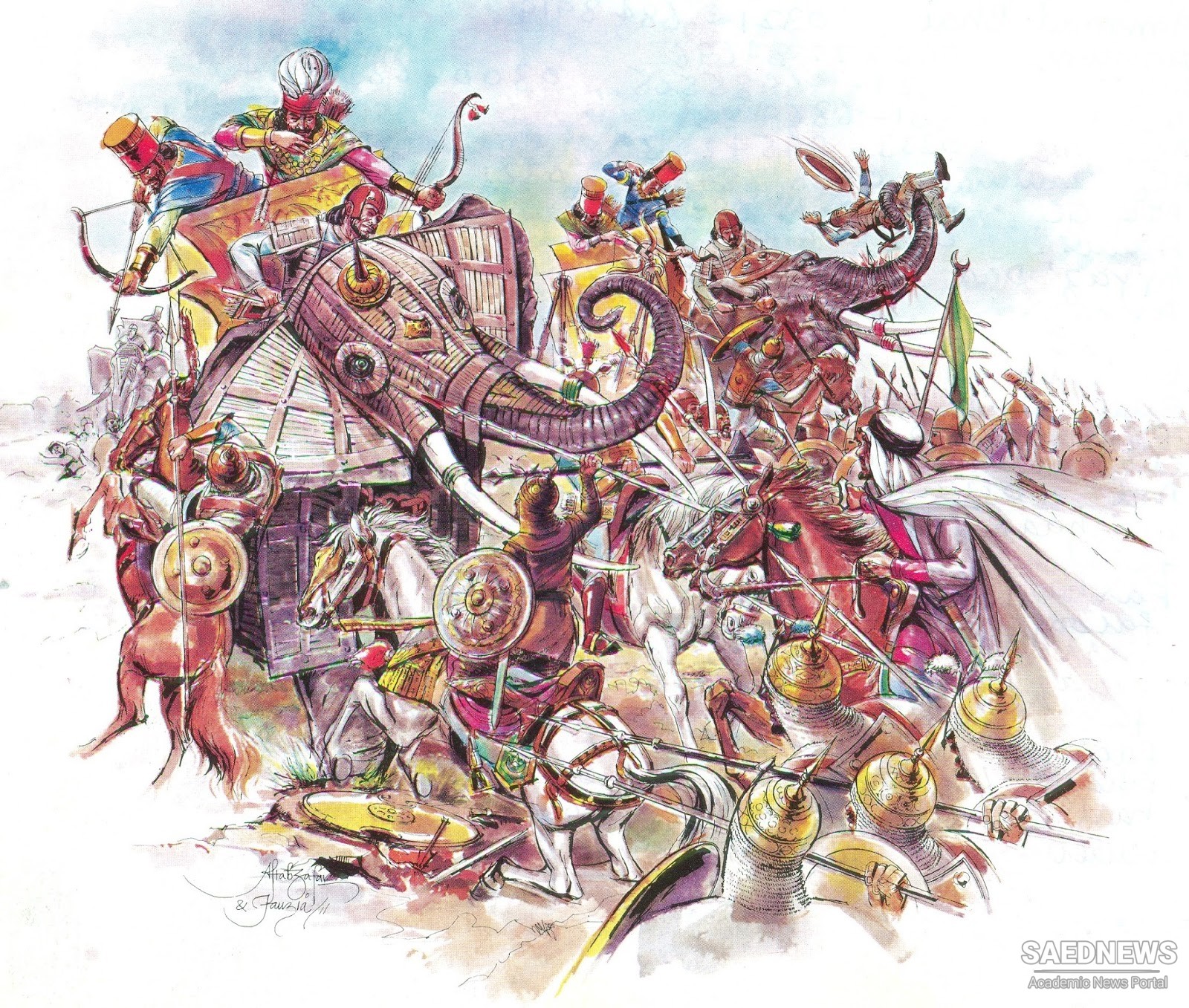The beduin Arabs who toppled the Sassanid Empire were propelled not only by a desire for conquest but also by a new religion, Islam. The Prophet Mohammad (peace be upon him), a member of the Hashimite clan of the powerful tribe of Quraysh, proclaimed his prophetic mission in Arabia in 612 and eventually won over the city of his birth, Mecca, to the new faith. Within one year of Prophet Muhammad's death in 632, Arabia itself was secure enough to allow his secular successor, Abu Bakr, the first caliph, to begin the campaign against the Byzantine and Sassanid Empires. Abu Bakr defeated the Byzantine army at Damascus in 635 and then began his conquest of Iran. In 637 the Arab forces occupied the Sassanid capital of Ctesiphon (which they renamed Madain), and in 641-42 they defeated the Sassanid army at Nahavand. After that, Iran lay open to the invaders. The Islamic conquest was aided by the material and social bankruptcy of the Sassanids; the native populations had little to lose by cooperating with the conquering power. Moreover, the Muslims offered relative religious tolerance and fair treatment to populations that accepted Islamic rule without resistance. It was not until around 650, however, that resistance in Iran was quelled. Conversion to Islam, which offered certain advantages, was fairly rapid among the urban population but slower among the peasantry and the dihqans [farmers]. The majority of Iranians did not become Muslim until the ninth century (Source: The Iran Chamber).


 Persia or Greater Iran
Persia or Greater Iran














































